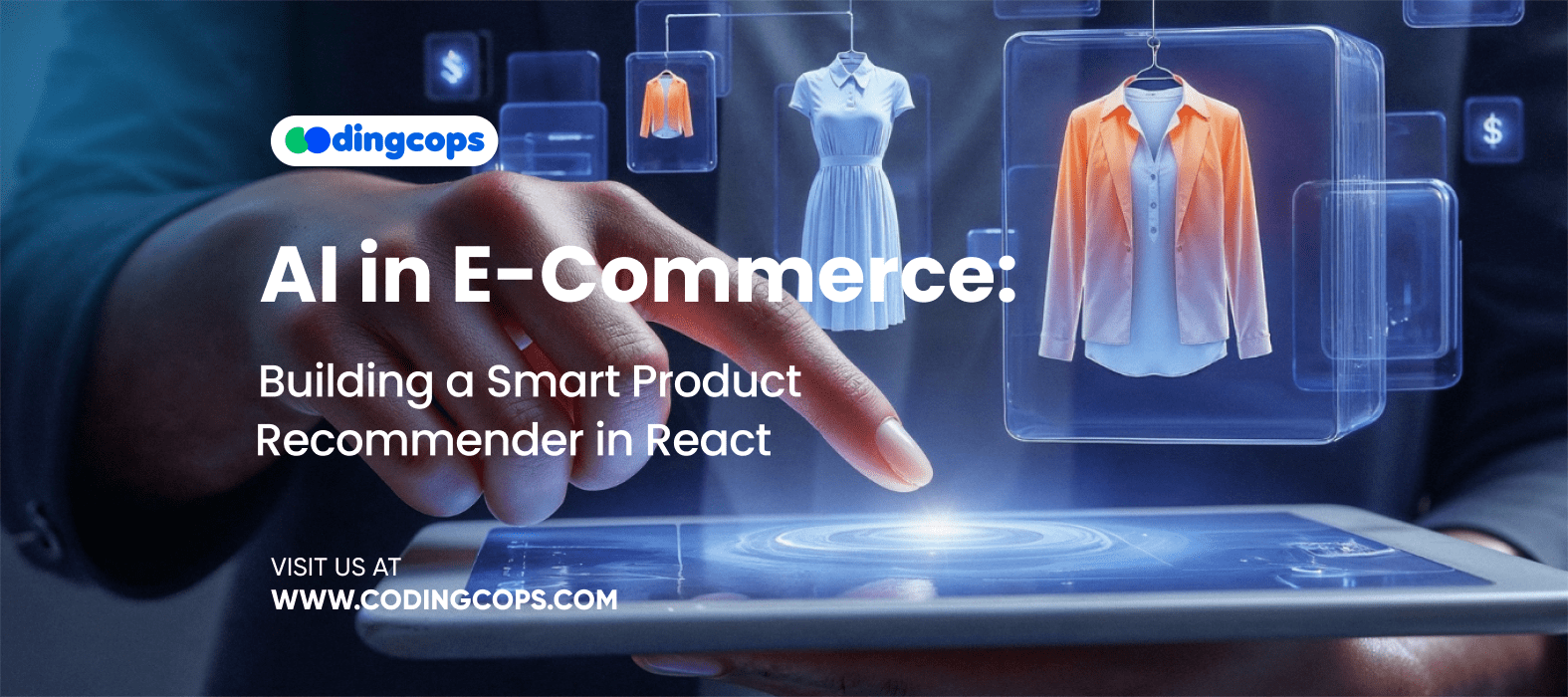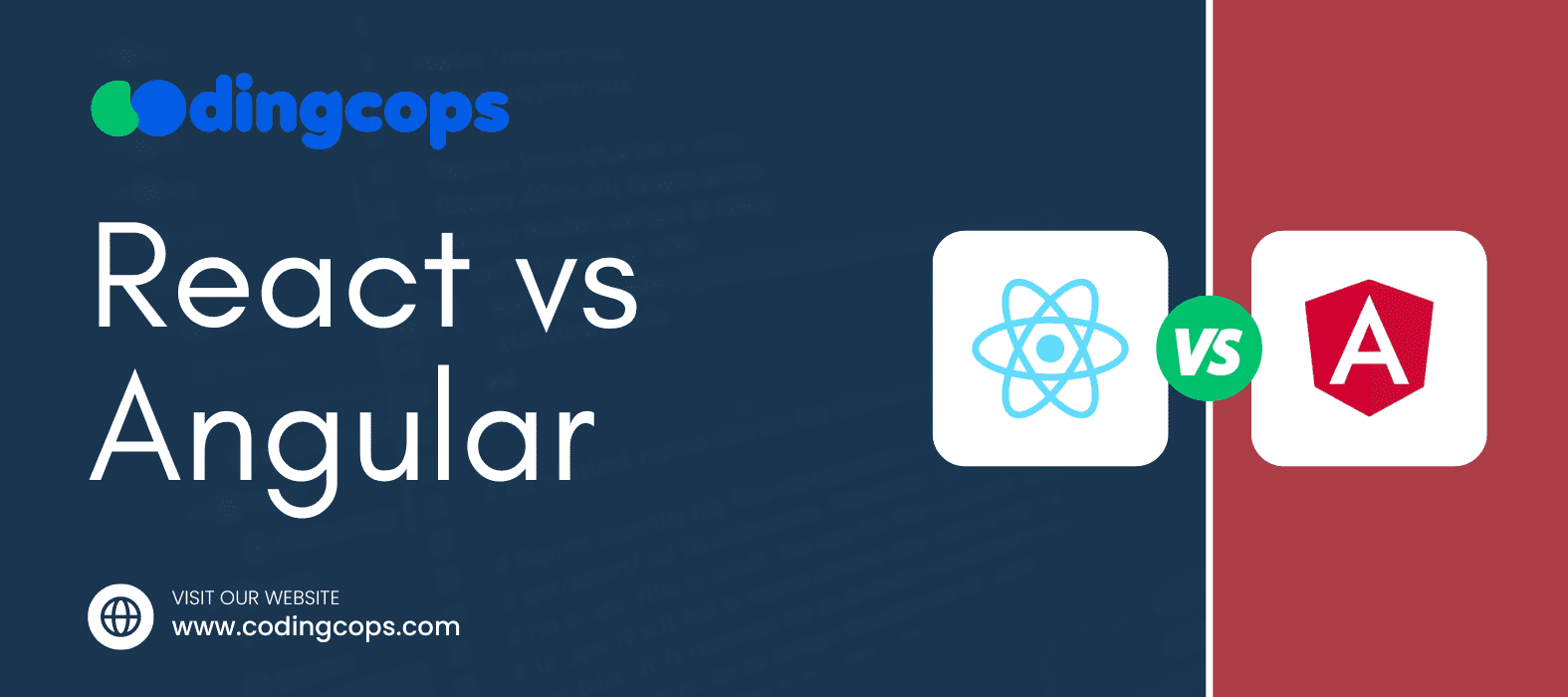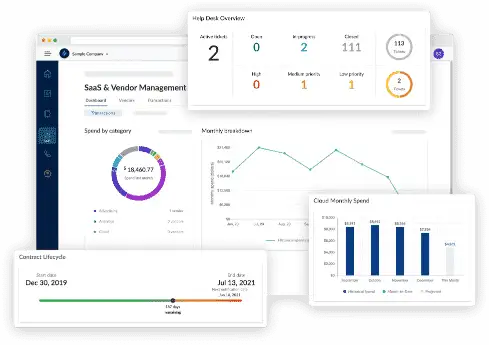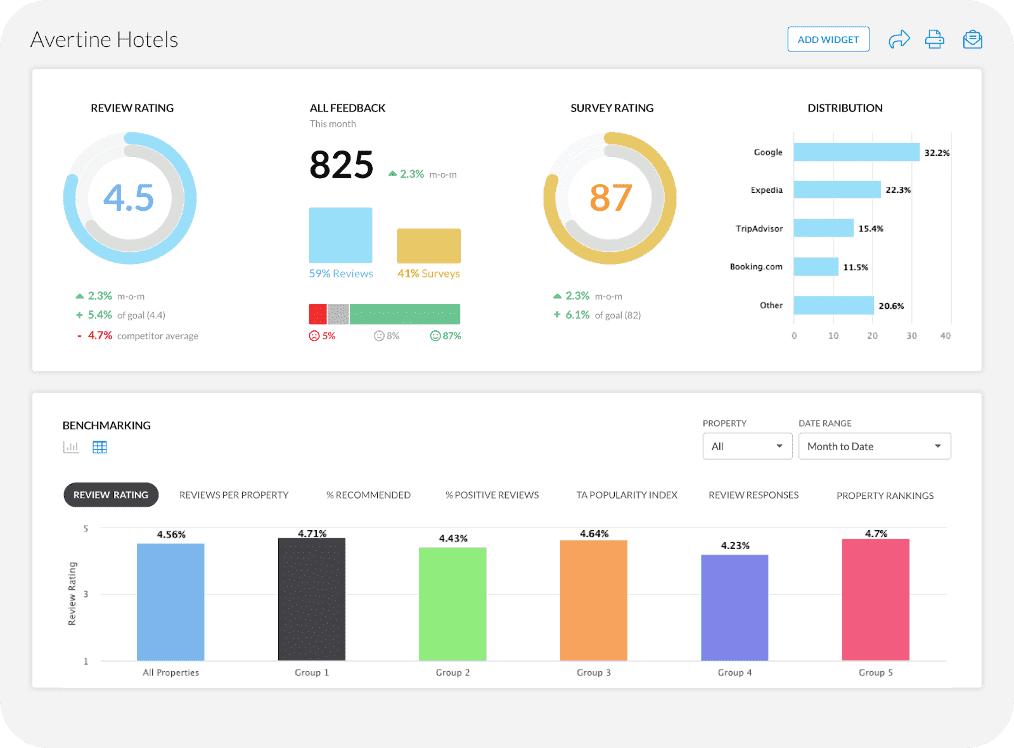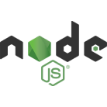The market size of AI in e-commerce is valued at $8.65 billion. Moreover, it will jump to $17.1 billion in less than five years. Also, in a hyper competitive environment, personalized experiences aren’t just nice to have; they are necessary.
AI recommendation systems are now a staple of successful online platforms. They suggest relevant products and increase user engagement. Moreover, AI in eCommerce provides personalized homepages and personalized recommendation carousels. Thus, these intelligent features are shaping how we shop online.
In this CodingCops guide, we’ll discuss the role of AI in eCommerce and look at how to build a smart product recommender using React.
What Does AI Do in eCommerce?
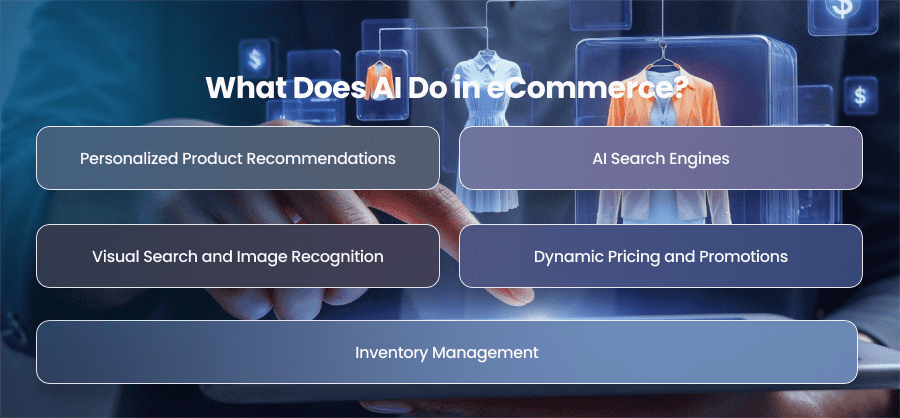
Personalized Product Recommendations
Personalization is at the forefront of AI’s contribution to eCommerce. By analyzing a user’s browsing history and past purchase preferences, AI can predict and recommend products the customer will most likely engage with or purchase.
Think about platforms like Amazon or Netflix. When you log in, the homepage is dynamic and personalized. This is because these platforms are using AI models trained to increase user retention and drive conversions. Furthermore, the same logic applies to online stores. These real time recommendation engines drive customer retention and upselling.
AI Search Engines
Traditional keyword searches often fail when shoppers don’t know exactly what they’re looking for. Moreover, AI improves this experience through natural language processing and semantic search. Therefore, instead of matching keywords, AI understands the intent behind a query.
For instance, some platforms go even further and provide voice search, which relies on AI to parse and respond accordingly.
Visual Search and Image Recognition
AI takes product discovery a step further by introducing visual search. The AI makes recommendations for visually comparable things that are accessible on the marketplace when users upload or take a picture of an item they like. This is especially useful in the fashion and home decor segments.
Dynamic Pricing and Promotions
eCommerce platforms can’t afford to use fixed pricing in a fluid market. Therefore, AI helps set dynamic prices by analyzing factors such as:
- Competitor pricing
- Customer location and behavior
- Supply and demand
- Seasonal trends
This allows businesses to automatically offer discounts or surge pricing when necessary. Thus, this maintains competitiveness while boosting profitability. Additionally, by forecasting which people are most likely to react to what sort of offer and through which channels, AI helps optimize marketing efforts.
Inventory Management
Making sure the appropriate items are in stock at the right moment is one of the most difficult tasks for any eCommerce company. AI assists in this area by precisely forecasting demand using past sales data and seasonal patterns. Moreover, AI systems can alert teams about low stock levels. Also, they can recommend restocking schedules and prevent overstocking.
Recommender System in eCommerce
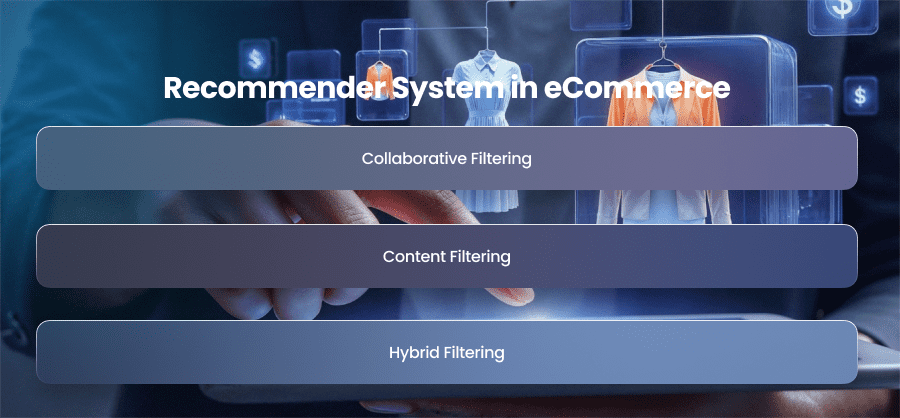
By making recommendations for items that a client is likely to find interesting, recommender systems in eCommerce are data-driven solutions that assist online merchants in customizing the buying experience. These algorithms make real-time product recommendations by examining user behavior and past purchases. As a result, their primary goal is to direct consumers to goods that they may not have otherwise found.
To decide what to recommend and to whom, recommender systems come in a variety of forms, each employing a unique set of methods.
Collaborative Filtering
Collaborative filtering works by identifying patterns in user behavior and utilizing the preferences of similar users to make recommendations. Moreover, this method doesn’t require understanding the content of the products themselves, it’s entirely based on user interaction data. Furthermore, collaborative filtering can be further divided into user filtering and item filtering. Both of these types focus on the relationship between users or between products.
Content Filtering
Content filtering focuses on the attributes of products and the preferences of a single user. It recommends products that are similar in characteristics, like category and color. This method is useful for new users who haven’t generated enough data for collaborative filtering to be effective.
Hybrid Filtering
Hybrid recommender systems combine the strengths of both collaborative and content filtering recommendation systems and offer more accurate and reliable suggestions. Furthermore, by blending user behavior with product attributes, these systems can overcome the limitations of using a single method. Moreover, Hybrid models are widely used by platforms like Amazon because they produce personalized recommendations that adapt as users interact more with the platform.
How to Build A Smart Product Recommender in React?
Setting Up The React Environment
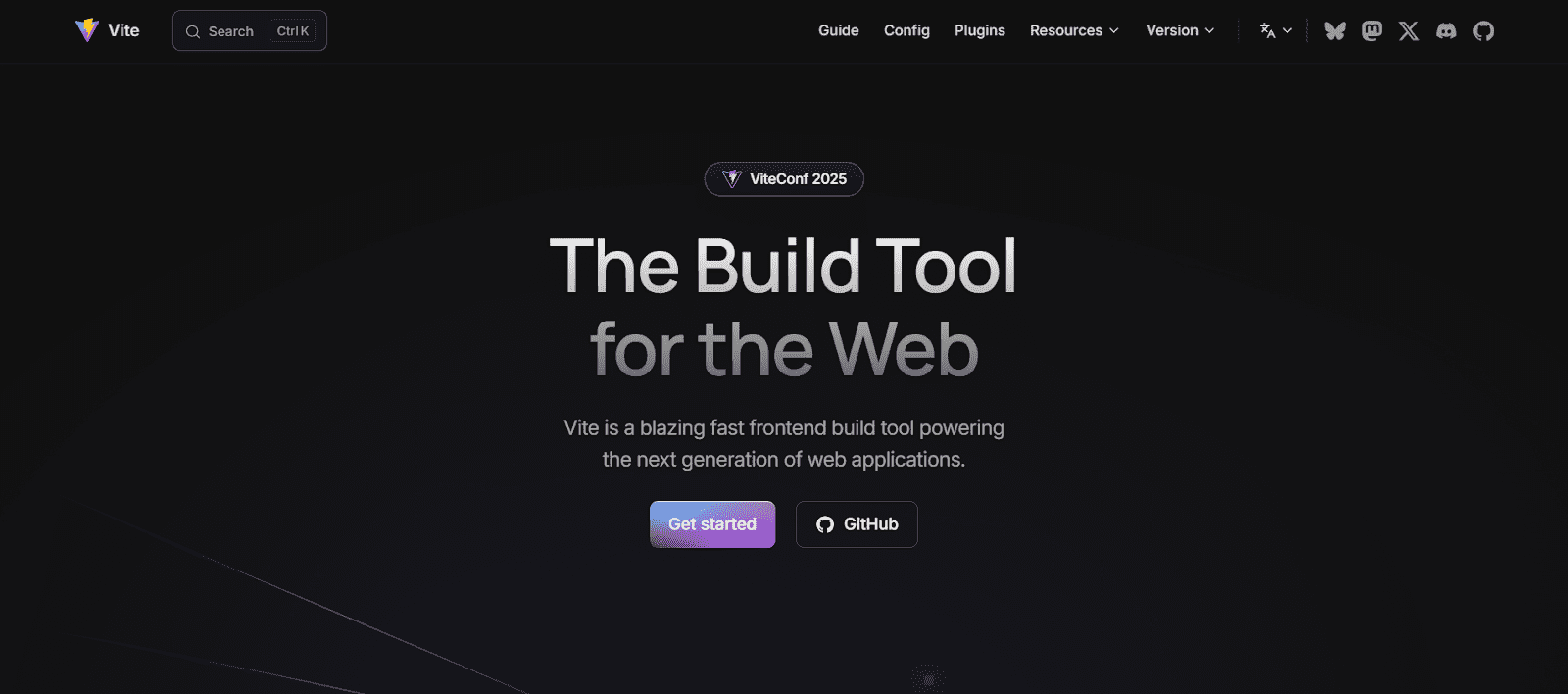
The first step in building a smart product recommender is setting up a React environment. Moreover, this involves creating a clean and scalable project structure using tools like Vite. These tools provide a boilerplate setup with minimal configuration. From here, it’s important to organize your components logically, like having separate folders for UI components and utility functions. Hence, this structure improves maintainability but also makes it easier to manage the different parts of your recommendation system.
Additionally, integrating routing with React Router and establishing global state management using tools like Context API or Redux prepares your app to handle dynamic content efficiently. Also, ensure that your environment supports asynchronous operations and responsive design.
Integrating AI Recommendations
Connecting your frontend to a recommendation engine is the next step when it is ready. You have the option of using a third-party service like AWS or developing the engine internally. These engines analyze customer behavior and other data sets to deliver personalized recommendations.
Additionally, the connection between the frontend and the AI backend must be secure and capable of handling updates in real time. Hence, this ensures that recommendations are current and relevant.
Improve UX With Smart Recommendations
It takes careful planning to build the user experience around intelligent suggestions. Suggestions should be interesting and beneficial rather than overbearing or invasive. Use eye catching carousels and well labled sections to increase user engagement while maintaining visual clarity.
Performance Optimization
Maintaining performance becomes critical when smart recommendations are pulled from dynamic data and rendered on the fly. Moreover, slow load times can negatively impact user experience and conversion rates. In a React app, performance optimization involves minimizing unnecessary renders and using efficient state management.
Additionally, load times may be greatly reduced by caching frequently used data and improving the rendering of lists. To find bottlenecks and enhance performance, you may also utilize tools like Lighthouse and React Profiler.
Lazy Loading
You can implement lazy loading to further enhance the performance of your recommender. Lazy loading ensures that only the components and data needed at specific moments are loaded. While others are deferred until they are required. You can reduce initial page load times and conserve bandwidth.
Final Words
AI in eCommerce is transforming how we make our purchases. By integrating intelligent product recommendations into your React application, you can improve user engagement and also drive revenue, and build trust.

